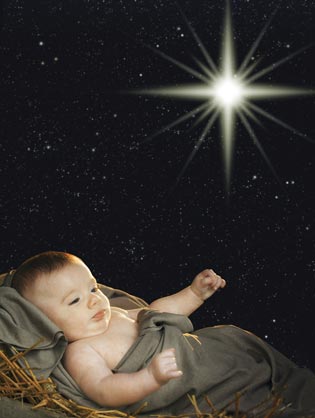 Unwrapping the mystery and meaning of Christ’s coming into the world
Unwrapping the mystery and meaning of Christ’s coming into the world
Christmas is the season of the great exchange. It starts with greeting cards and social invitations and culminates with gifts being opened beneath the tree. But none of that begins to explain the mystery of the greatest exchange. For in the depths of its meaning, Christmas is about the exchange of divinity and humanity, eternity and temporality, life and death.
At Christmastime we celebrate God’s coming to earth in human form. The Creator became the creature to set right all that had gone wrong on this planet. It would be ridiculous to receive a perfectly good toaster on Christmas morning, then take it to back to the store on Boxing Day and exchange it for a broken one. Why then would God forsake his kingly state and humiliate himself to be part of the human race, experiencing all that is painful, frustrating and limited?
Christmas is about the romance and mystery of Jesus’ birth, but also so much more. We should not deny or suppress the tenderness and intimacy of that moment when Christ the King, the Messiah, entered our world and was laid in a lowly feeding trough for animals. Yet Christmas signifies so much more. “Joy to the world! the Lord is come†means precisely that he who comes is indeed our Redeemer, the one through whose dying and rising we are made new. This is the great exchange that we ponder at Christmastime-that God became like us so we could become fully human, bearing his image. God accepted death that the world might accept life. Because Christ came to earth to live among us, our humanness is valued-the stuff of earth is sanctified.
Last month we looked at the hope that comes with the Advent season. As Christians, we look forward in hope to the destruction of the powers of evil. We anticipate seeing the righteousness and justice of God, the dawning of God’s peace over all the nations and the undoing of the machines of war. At Christmastime, this hope is intensified by the coming of Christ. Because we serve a God who walked among us, befriending sinners and healing the sick, we can address the concerns of our day, both small and large. The Kingdom of God has been brought near. We know God desires each person to experience physical and spiritual wholeness, and we have a message of hope and salvation to bring it about.
Undoubtedly, what took place at Bethlehem 2,000 years ago is outside the bounds of human experience and explanation. But through the Nativity we can respond to Christ’s exchange of divinity for humanity. “The Word became flesh and made his dwelling among us,†the Bible tells us (John 1:14). This is the great message of the Incarnation. Jesus Christ wrapped himself in humanity, bringing new value to body and being and the creation that surrounds us. He became what we are-and not just “we†in the Church, “we†in the sense of everybody, all sharing a common humanity.
For me, this poses a big challenge. I work hard every day to see Jesus in the people with whom I interact, both those I love and admire and even the ones who drive me crazy. How easy it becomes for me to pass by panhandlers, gang members and drug dealers without so much as recognizing their existence. But through this understanding of the Incarnation I am reminded that each one of us is a potential means of grace-each one bears the image of God.
God in Christ exchanged our broken humanity for wholeness. We live that message of hope, and for that reason we cannot shy away from the broken, the beaten, the hungry, the orphaned and the widowed. Instead, we must learn to recognize Christ in them. This earthly sod is holy ground because Jesus Christ has walked it and is in our midst.
Are there ways our worship can help us experience the richness of the Christmas season? Are there visual aids and symbols that deepen our understanding of the Incarnation? Do we need to pull the mercy seat into the centre of the congregation, reminding us that Jesus Christ has come and made a way for all people to know his grace?
Rather than a decorated tree, perhaps we need a basin and a towel as central symbols of Christmas, reminding us of Christ’s humanity and our identification with him as servants, both to each other and to the least. How can our worship space become reflective of the God who creates and gives good gifts to his people? Can we depict beauty for ashes?
I don’t have all the answers, but I’m seeking them out as I continue to reflect on the mystery of this celebration of the great exchange. May your Christmas be enriched with the presence of Christ.
by Andrea Brown
Student, William and Catherine Booth College
Reprinted from Salvationist, December 2007